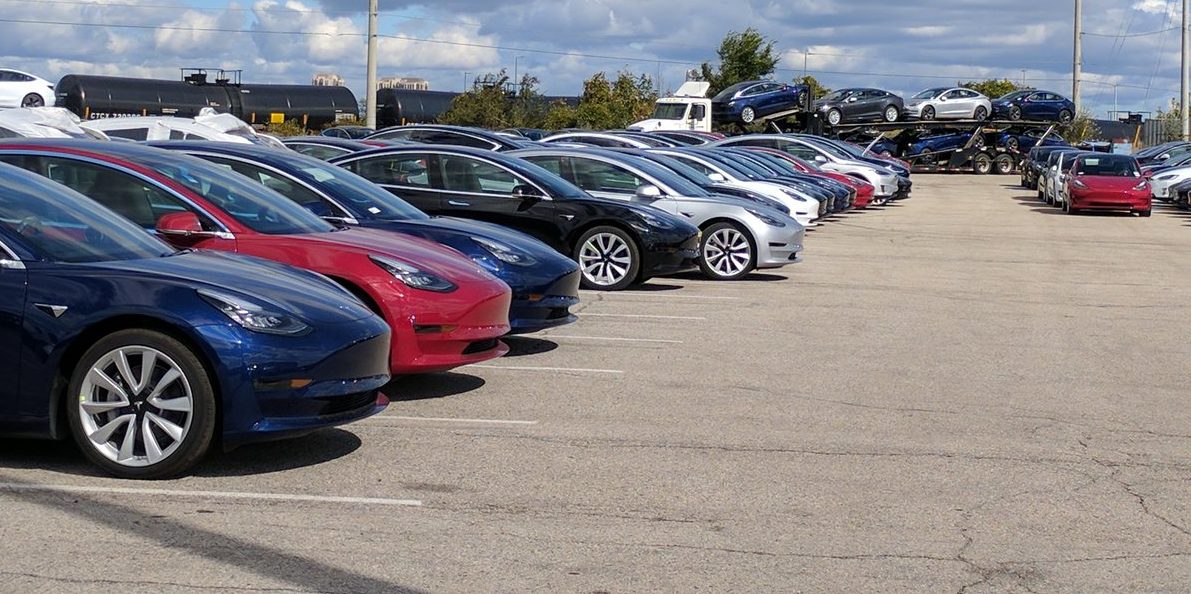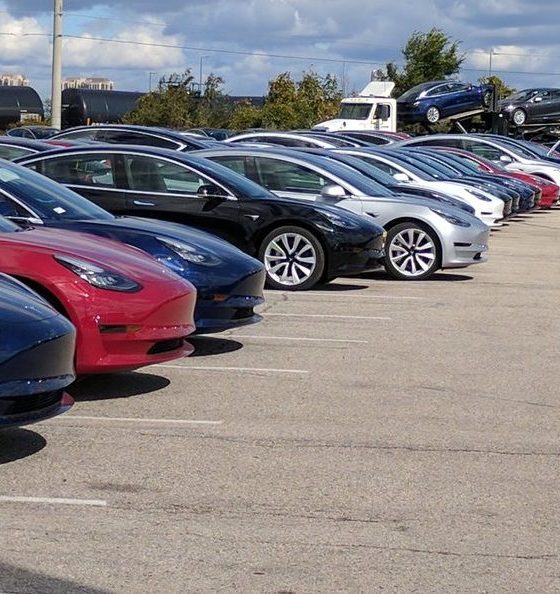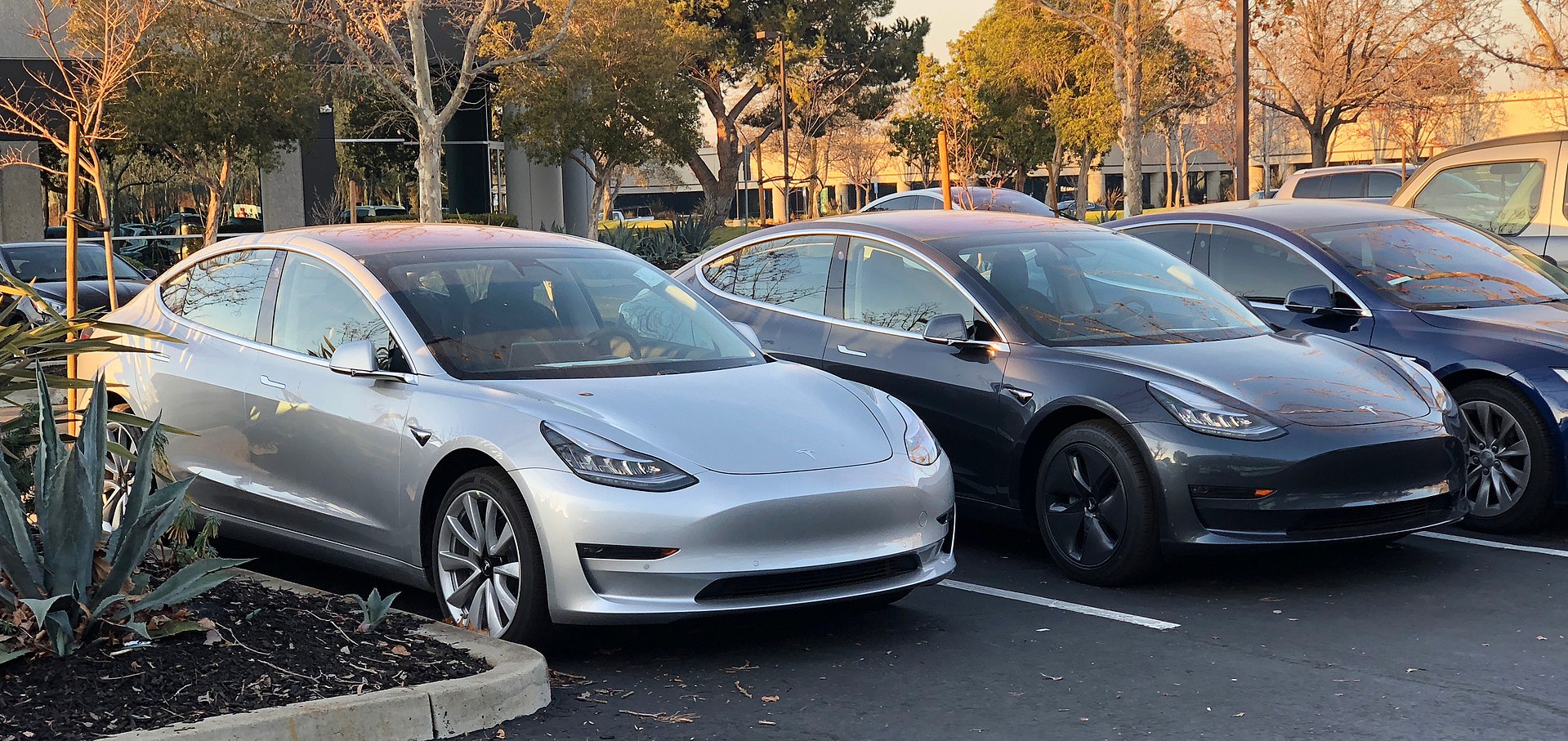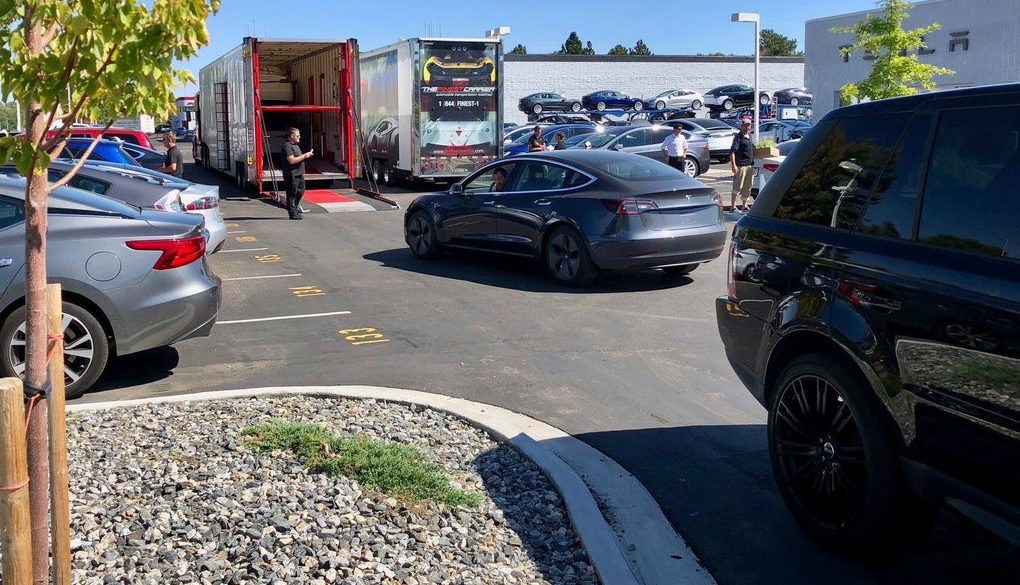

Investor's Corner
Tesla’s more experienced rivals in the US auto market are feeling the Model 3’s presence
When Elon Musk wrote about his secret Master Plan in 2006, he envisioned a reasonably-priced electric vehicle that can take on the best-selling fossil fuel-powered cars in the market. It took years, but the electric car that Musk mentioned 12 years ago is here, and it’s called the Tesla Model 3.
The Model 3 is Tesla’s first attempt at creating a mass-market car. The company’s vehicles prior to the Model 3 — the Model S and Model X — sold well, but they were premium vehicles that compete in the luxury segment. The Model 3 was designed to be something else. It was an electric car designed to provide a viable and superior alternative to fossil fuel-powered automobiles. The Model 3 is even priced aggressively, starting at $35,000, or roughly the price of a top-tier Toyota Camry.
Tesla’s ramp of the Model 3 was not easy. In an interview earlier this year, Elon Musk described the past 12 months, much of which was spent ramping the electric sedan’s production, as one of the most painful and difficult years of his career. As Tesla released its Q3 production and delivery numbers, though, it appeared that the electric car maker has finally left Elon Musk’s self-dubbed “production hell.” Tesla produced a total of 80,142 electric cars in Q3, 53,239 of which were Model 3. Deliveries totaled 83,500 vehicles, which included 55,840 Model 3.

There is no denying that Tesla’s production and delivery figures for the Model 3 in Q3 were encouraging. Tesla has not revealed the monthly sales figures of the Model 3 yet, but early estimates of the electric car’s sales in September point to more than 22,000 units being delivered during the month. This particular number is just an estimate, but the rest of the US auto market, including some of the auto industry’s most respected brands, are starting to feel the presence of the Model 3.
One of these carmakers is BMW AG. In a statement to Bloomberg, Bernhard Kuhnt, Chief Executive Officer of BMW North America, acknowledged Tesla’s increasing presence in the auto market. BMW was among the carmakers that saw a small gain in September, though its 1.3% rise was primarily due to the strength of the BMW X3, a crossover SUV that would eventually be challenged by Tesla’s upcoming Model Y. With the Tesla Model 3, BMW’s passenger cars such as the 3-Series and the 5-Series are seeing intense competition.
“Tesla is now ramping up their volumes, and it’s putting pressure on that market segment. In that environment, I’m very, very pleased to say we were up,” Kuhnt said.
The Model 3’s presence could also be seen in the performance of Mercedes-Benz on September. The legacy carmaker’s deliveries dropped 9.8% overall, and the Mercedes-Benz C-Class, which is among the United States’ best-selling luxury sedans, saw a steep 24% plunge. Lexus, Toyota Motor Corp.’s luxury brand, saw a 6.1% decline in September as well.

Perhaps most notable, though, was the drop in the sales of a vehicle that is as ubiquitous as they come — the Toyota Corolla Family. Last August, auto sales tracking website GoodCarBadCar listed the Model 3 as the 5th best-selling passenger car in the United States, directly behind the Toyota Camry, Honda Civic, Honda Accord, and the Toyota Corolla Family. Toyota revealed that the Corolla Family sold 20,797 units in September, a ~20% decline over its sales in August, when 26,155 units of the vehicles were sold. If the 22,000-unit estimate for the Model 3’s September sale proves accurate, then Tesla’s first attempt at a mass-market electric car might have just dethroned one of America’s favorite low-cost automobiles.
What is particularly impressive with the Model 3 is that the vehicle is priced higher than its competitors at the top of the passenger car segment. If the Model 3 did beat the Corolla Family’s September sales numbers, it would mean that the electric car, whose selling price currently averages $60,000 (only premium variants are available for now), just outsold a vehicle that tops out at $22,730 (Corolla Family XSE). With Tesla seemingly setting the stage for the $35,000 base Model 3, cars like the Honda Civic and the Toyota Camry could find themselves facing some steep competition.
Things are looking optimistic for Tesla’s next quarters. Gigafactory 1 is set to receive upgraded battery cell production lines from Panasonic, and new Grohmann machines are expected to make module production “three times faster and three times cheaper.” Wall Street analyst Romit Shah from Nomura Instinet also noted that the company’s numbers this past quarter could prove as Tesla’s break-even point. Shah further stated that when Tesla’s deliveries increase to about 100,000 vehicles per quarter, the company could be profitable and sustainable.

Investor's Corner
Tesla stock closes at all-time high on heels of Robotaxi progress

Tesla stock (NASDAQ: TSLA) closed at an all-time high on Tuesday, jumping over 3 percent during the day and finishing at $489.88.
The price beats the previous record close, which was $479.86.
Shares have had a crazy year, dipping more than 40 percent from the start of the year. The stock then started to recover once again around late April, when its price started to climb back up from the low $200 level.
This week, Tesla started to climb toward its highest levels ever, as it was revealed on Sunday that the company was testing driverless Robotaxis in Austin. The spike in value pushed the company’s valuation to $1.63 trillion.
Tesla Robotaxi goes driverless as Musk confirms Safety Monitor removal testing
It is the seventh-most valuable company on the market currently, trailing Nvidia, Apple, Alphabet (Google), Microsoft, Amazon, and Meta.
Shares closed up $14.57 today, up over 3 percent.
The stock has gone through a lot this year, as previously mentioned. Shares tumbled in Q1 due to CEO Elon Musk’s involvement with the Department of Government Efficiency (DOGE), which pulled his attention away from his companies and left a major overhang on their valuations.
However, things started to rebound halfway through the year, and as the government started to phase out the $7,500 tax credit, demand spiked as consumers tried to take advantage of it.
Q3 deliveries were the highest in company history, and Tesla responded to the loss of the tax credit with the launch of the Model 3 and Model Y Standard.
Additionally, analysts have announced high expectations this week for the company on Wall Street as Robotaxi continues to be the focus. With autonomy within Tesla’s sights, things are moving in the direction of Robotaxi being a major catalyst for growth on the Street in the coming year.
Elon Musk
Tesla needs to come through on this one Robotaxi metric, analyst says
“We think the key focus from here will be how fast Tesla can scale driverless operations (including if Tesla’s approach to software/hardware allows it to scale significantly faster than competitors, as the company has argued), and on profitability.”

Tesla needs to come through on this one Robotaxi metric, Mark Delaney of Goldman Sachs says.
Tesla is in the process of rolling out its Robotaxi platform to areas outside of Austin and the California Bay Area. It has plans to launch in five additional cities, including Houston, Dallas, Miami, Las Vegas, and Phoenix.
However, the company’s expansion is not what the focus needs to be, according to Delaney. It’s the speed of deployment.
The analyst said:
“We think the key focus from here will be how fast Tesla can scale driverless operations (including if Tesla’s approach to software/hardware allows it to scale significantly faster than competitors, as the company has argued), and on profitability.”
Profitability will come as the Robotaxi fleet expands. Making that money will be dependent on when Tesla can initiate rides in more areas, giving more customers access to the program.
There are some additional things that the company needs to make happen ahead of the major Robotaxi expansion, one of those things is launching driverless rides in Austin, the first city in which it launched the program.
This week, Tesla started testing driverless Robotaxi rides in Austin, as two different Model Y units were spotted with no occupants, a huge step in the company’s plans for the ride-sharing platform.
Tesla Robotaxi goes driverless as Musk confirms Safety Monitor removal testing
CEO Elon Musk has been hoping to remove Safety Monitors from Robotaxis in Austin for several months, first mentioning the plan to have them out by the end of 2025 in September. He confirmed on Sunday that Tesla had officially removed vehicle occupants and started testing truly unsupervised rides.
Although Safety Monitors in Austin have been sitting in the passenger’s seat, they have still had the ability to override things in case of an emergency. After all, the ultimate goal was safety and avoiding any accidents or injuries.
Goldman Sachs reiterated its ‘Neutral’ rating and its $400 price target. Delaney said, “Tesla is making progress with its autonomous technology,” and recent developments make it evident that this is true.
Investor's Corner
Tesla gets bold Robotaxi prediction from Wall Street firm
Last week, Andrew Percoco took over Tesla analysis for Morgan Stanley from Adam Jonas, who covered the stock for years. Percoco seems to be less optimistic and bullish on Tesla shares, while still being fair and balanced in his analysis.

Tesla (NASDAQ: TSLA) received a bold Robotaxi prediction from Morgan Stanley, which anticipates a dramatic increase in the size of the company’s autonomous ride-hailing suite in the coming years.
Last week, Andrew Percoco took over Tesla analysis for Morgan Stanley from Adam Jonas, who covered the stock for years. Percoco seems to be less optimistic and bullish on Tesla shares, while still being fair and balanced in his analysis.
Percoco dug into the Robotaxi fleet and its expansion in the coming years in his latest note, released on Tuesday. The firm expects Tesla to increase the Robotaxi fleet size to 1,000 vehicles in 2026. However, that’s small-scale compared to what they expect from Tesla in a decade.
Tesla expands Robotaxi app access once again, this time on a global scale
By 2035, Morgan Stanley believes there will be one million Robotaxis on the road across multiple cities, a major jump and a considerable fleet size. We assume this means the fleet of vehicles Tesla will operate internally, and not including passenger-owned vehicles that could be added through software updates.
He also listed three specific catalysts that investors should pay attention to, as these will represent the company being on track to achieve its Robotaxi dreams:
- Opening Robotaxi to the public without a Safety Monitor. Timing is unclear, but it appears that Tesla is getting closer by the day.
- Improvement in safety metrics without the Safety Monitor. Tesla’s ability to improve its safety metrics as it scales miles driven without the Safety Monitor is imperative as it looks to scale in new states and cities in 2026.
- Cybercab start of production, targeted for April 2026. Tesla’s Cybercab is a purpose-built vehicle (no steering wheel or pedals, only two seats) that is expected to be produced through its state-of-the-art unboxed manufacturing process, offering further cost reductions and thus accelerating adoption over time.
Robotaxi stands to be one of Tesla’s most significant revenue contributors, especially as the company plans to continue expanding its ride-hailing service across the world in the coming years.
Its current deployment strategy is controlled and conservative to avoid any drastic and potentially program-ruining incidents.
So far, the program, which is active in Austin and the California Bay Area, has been widely successful.








